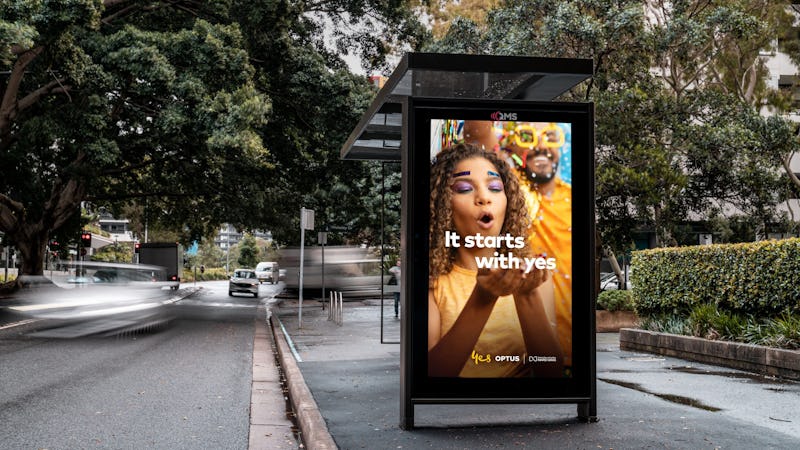
In today's competitive business landscape, understanding customers' perceptions of a brand is essential for success. A well-crafted brand perception survey can reveal insights that shape marketing strategies and enhance brand image. But how can you create an effective survey that captures the essence of customer perceptions? Read on to discover the power of brand perception surveys, learn about the key components, and explore tools and resources that can help you craft the perfect survey.

Short Summary
- Brand perception surveys offer businesses an invaluable insight into customer opinions and preferences.
- Key components of a successful survey include cognitive, emotional, language and action questions to gain comprehensive insights.
- Identifying target audience is essential for accurate results as well as analyzing & implementing survey results to improve marketing strategies.
The Power of Brand Perception Surveys

Brand perception surveys are invaluable tools that provide businesses with a window into the minds of their customers. By measuring brand perception, companies can align their marketing campaigns with the target audience's expectations and strengthen brand image. Gaining insights into brand qualities, market trends, and customer experience can help businesses tailor their marketing efforts, driving brand loyalty and awareness.

Conducting brand perception surveys is a crucial aspect of market research. Understanding how customers perceive a brand and its products can help businesses identify areas of improvement, capitalize on customer preferences, and adapt to market trends. An effective perception survey can not only improve brand awareness and identity, but also contribute to building brand equity and affinity.
Key Components of a Successful Brand Perception Survey

To create a successful brand survey, it's essential to include cognitive, emotional, language, and action questions. These components provide a comprehensive view of customer perceptions, allowing businesses to uncover valuable insights from different perspectives.
Let's dive deeper into each component and explore their significance in a brand survey.
Cognitive Questions

Cognitive questions are designed to elicit the associations that consumers have with a particular brand. By asking questions that facilitate the understanding of how customers perceive the brand and its products, businesses can gain insights into their target audience's mindset. Who do you think our brand targets? This is an important question to consider." can provide valuable information about customers' understanding of the intended demographic.
In a brand perception survey, it's essential to structure cognitive questions effectively. Open-ended questions can be used initially, followed by multi- or single-select lists to refine the responses. This approach allows businesses to capture a broad range of customer opinions and better understand their perceptions of the brand.
Emotional Questions

Emotional questions in a brand survey aim to identify the feelings associated with the brand and their influence on customers' attitudes towards it. For instance, asking about negative experiences with the brand can help businesses understand what might be adversely affecting their reputation. By analyzing the resilience of the brand in light of the intensity of the negative experience, companies can gauge the effect on the brand's recognition.
The significance of emotional questions in a brand perception survey cannot be overstated. They enable businesses to uncover the sentiments customers have towards the brand and its products, which is key to identifying areas for improvement and maintaining a positive perception.
Language Questions

Language questions in a brand perception survey measure how customers describe the brand and its products. By assessing the language customers use to articulate their perceptions, businesses can comprehend their level of trust in the brand and use this knowledge to inform their marketing strategies.
For example, a brand association survey might ask respondents to choose qualities such as "innovative," "trustworthy," or "inspiring" to describe the brand. By analysing the language used, businesses can identify areas for improvement and tailor their marketing communications to better resonate with their audience.
Action Questions

Action questions in a brand perception survey measure how customers interact with the brand and its products. They provide insights into customer experiences and interactions with the brand, which can help businesses understand how their products and services are perceived.
For instance, asking about customers' last experience with the brand or their opinions on the brand's pricing can reveal valuable information about the brand's perceived value and quality. By identifying the factors that shape customer interactions and experiences, businesses can adapt their strategies to enhance customer satisfaction and foster positive brand perception.
Identifying Your Target Audience

The first step in constructing a brand perception survey is identifying the appropriate target audience. Gathering feedback from multiple audiences throughout the customer sales cycle can provide valuable insights into customer perceptions, enabling organizations to focus on process and product improvements.
To ensure accurate results, it's essential to differentiate between existing customers and non-customers in the survey. To ascertain the level of familiarity respondents have with your brand, include a question that inquires about the frequency of their purchases of your brand. This approach helps businesses tailor their surveys to the appropriate audience and gather insights that are relevant to their marketing strategies and goals.
Timing Your Brand Perception Study

Timing plays a crucial role in conducting a successful brand perception study. Regularly measuring brand awareness ensures that customer perceptions and preferences remain up-to-date. Conducting a brand perception survey before planning any new marketing strategy or seeking funding and strategic partnerships can provide valuable insights into existing strengths and weaknesses.
Effectively managing the feedback collection process requires monitoring the changing perceptions and awareness of the target audience over time. By conducting brand awareness surveys at the right time, businesses can assess the effectiveness of their marketing strategies and make necessary adjustments to stay ahead of the competition.
Crafting Engaging Survey Questions

Creating captivating survey questions is key to obtaining reliable data and enhancing response rates in a brand perception survey. To ensure that only respondents familiar with your brand continue with the survey, implement a qualifying question at the beginning of the survey. Closed questions should be used to gather quantitative data, while open questions are best suited to obtaining qualitative responses.
Pertinent follow-up questions can also create a sense of attentiveness and encourage respondents to provide more detailed feedback. Crafting engaging questions that resonate with your target audience is essential for obtaining insights and improving your brand's Brand recognition.
Analyzing and Implementing Survey Results

Once you have collected responses to your brand perception survey, it's essential to analyze the results and implement the insights gained. There are various approaches to analyzing survey results, such as creating graphs or charts, utilizing statistical software, and calculating percentages and averages manually. It's imperative to consider sample size, segment data, and present findings in an understandable and concise manner.
The objective of analyzing and executing survey results is to recognize areas that require improvement and customize marketing strategies accordingly. Understanding how customers initially became aware of the brand can provide insights into the efficacy of various marketing channels and the overall brand perception, thereby aiding in the improvement of marketing strategies.
Case Studies: Successful Brand Surveys

Examining case studies of successful brand perception surveys can provide insights and inspiration for creating your own effective survey. These case studies illustrate how companies have utilized brand surveys to gain insight into how customers view their brand and how this understanding can be employed to improve their brand perception.
Notable brands have used consumer insights to evaluate their branding strategies and make adjustments based on the feedback received. By learning from the successes of others, businesses can craft their own perception surveys that effectively capture customer opinions and preferences, ultimately leading to a more positive perception.
Tools and Resources for Creating Brand Perception Surveys

To create an effective brand perception survey, businesses can utilize tools such as Qualtrics, Attest, and Typeform. These tools offer a range of features and functionalities that can aid in the development of a comprehensive survey, tailored to the unique needs of your brand. Qualaroo is another survey tool that can assist in tracking key performance indicators such as brand awareness, brand loyalty, and brand perception via contextual on-site and in-app Net Promoter Score, Customer Satisfaction, and other survey types.
By leveraging these tools and resources, businesses can streamline the survey creation process and ensure that their brand perception surveys are designed to capture the most relevant and insights from their audience.
Mastering Brand Dynamics
Creating a robust 'brand awareness and brand perception project' is pivotal in understanding how consumers view your brand. This involves meticulously crafting 'brand awareness survey questions examples' to gather insights that are both actionable and revealing. The 'brand perception index' serves as a quantifiable metric, gauging how your brand is perceived in comparison to competitors. Effective 'brand perception management' is key in steering these perceptions in a favorable direction. This also involves 'brand perception measurement,' a process of continually assessing how brand perception shifts over time, especially in response to marketing efforts. Finally, learning from 'changing brand perception examples' can provide valuable lessons on how brands have successfully altered their market position and public perception. Leveraging these components strategically can transform how your brand is viewed, solidifying its position in the market.
Summary
Creating an effective brand perception survey is a crucial aspect of business marketing efforts. It is the foundation for measuring brand perception and gives businesses the insights they need to understand how their brand image resonates with their target market.
To craft an impactful brand awareness survey, the marketing team needs to strategically frame brand survey questions that capture the essence of the customers' perception. This can be achieved using a combination of online surveys, face-to-face interviews, or phone surveys. Remember that the audience can be diverse, involving current customers, existing clients, business partners, former customers, or even potential clients who have yet to engage with the brand.
An online survey is a great example of a tool that can easily reach all these stakeholders and provides valuable insight into how marketing campaigns are shaping brand awareness. It also offers the advantage of enabling respondents to answer in their own words through open-ended questions, thereby generating qualitative data that offer rich, nuanced insights.
Moreover, to gather quantitative responses that provide clear, easily comparable data, your survey should include questions that ask respondents to rank traits or characteristics of the brand. For instance, the question, "On a scale of 1-10, how would you rate our customer service?" can give you tangible data to measure and work on for improvement based on customer feedback.
The brand identity section should include questions that encourage customers to think about your brand in relation to others. For instance, 'How does our company compare with other brands in the market?' This question can unveil how the brand stands in relation to its competition.
Including a 'brand affinity' section can shed light on the emotional attachment customers have towards your brand. Questions like "What words come to mind when you hear our company name?" and "Describe your emotional connection with our brand" can provide valuable insights into what the customers associate with your brand.
When considering 'first impression' questions, ask respondents to describe their initial perception of your brand. An example of such a question could be, "What was your first impression when you encountered our brand?" This can offer valuable insights into what elements are working in your marketing campaign, as well as areas that may need improvement.
Remember to ask open-ended questions like "In your own words, how would you describe our brand?" and "What do you think about our company?" These will encourage respondents to provide more in-depth and individual perceptions of your brand.
Finally, it's important to keep in mind that one survey may not be enough to gain a comprehensive understanding of brand perception. Regular surveys conducted after major marketing campaigns or significant company events can provide a more accurate picture of how brand perception changes over time.
In conclusion, creating an effective brand perception survey is a critical aspect of understanding and improving your brand's image in the minds of your customers. By incorporating cognitive, emotional, language, and action components, targeting the right audience, timing your study correctly, crafting engaging questions, analyzing results, and implementing the insights gained, you can elevate your brand's perception and ensure ongoing success in today's competitive market. Remember, the power of brand perception surveys lies in their ability to provide insights that drive informed decision-making and tailored marketing strategies.
Frequently Asked Questions
What is a brand perception survey?
A brand perception survey is a tool used to capture data on how customers, stakeholders, users, and others perceive your brand. It provides an insight into what people think about you, helping you gain valuable feedback from your audience.
By understanding how people perceive your brand, you can make informed decisions about how to improve it. You can use the survey results to identify areas of improvement, create targeted campaigns, and measure the success of your efforts.
What are example brand perception survey questions?
Getting valuable customer feedback on your brand's perception is key for success. To gather insight on how customers feel about your brand, consider asking them questions such as:
What emotions come to mind when you think of our brand? How does our brand stack up compared to competitors? How could we better serve your needs? How likely would you be to recommend us to others?
How do you measure brand perception in a survey?
Measuring brand perception can be achieved by conducting surveys to understand consumer thoughts, using social listening tools or Google alerts to track online mentions of the brand, and doing brand audits to evaluate its standing against competitors.
These approaches can help companies gain insights on customer sentiment and what areas may need improvement.
How do you identify brand perception?
Measuring brand perception requires analyzing data from online reviews, surveys, social media, and other resources. You can look at brand mentions, review ratings, content views, time spent on page, paid content performance, and competitor comparisons to get an accurate view of how your audience perceives your brand.
What are example brand perception survey questions?
These brand perception survey questions can help businesses gain valuable insight into how their customers perceive them. What emotions does our brand elicit?
How would you rate your overall satisfaction with the brand?
Do you trust our brand?
Is our brand associated with any particular values or ideals?


